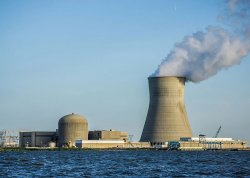Nuclear energy, while not a renewable energy as most of the above sources are, is nevertheless a carbon free energy and an important part of the world’s energy portfolio as it transitions to other renewable sources. Among conventional energy sources currently in use, only nuclear energy emits no carbon in its generation of energy. Further, because it uses uranium and not fossil fuels, it also avoids the release of other harmful pollutants, such as nitrogen dioxide and sulfur dioxide.
How it Works
Nuclear generators make use of nuclear fission, a process during which atoms are separated, which causes a significant release of energy in the form of heat and radiation. When this happens, other atoms are similarly split, causing a nuclear chain reaction. Nuclear generators are constructed to contain the energy of this reaction, which is then transferred into areas where it heats water, creates steam, and turns turbines to generate electricity. This process generally uses uranium, which, while finite, can be used fairly freely as a result of the relatively small amount used in the process.
Nuclear Energy in New Jersey
Nuclear energy is an important fixture in New Jersey’s energy production; in 2017, nuclear and natural gas combined to provide over 90% of net generation for the state. Nuclear energy also constitutes the vast majority of carbon free energy generation in New Jersey. Two nuclear power plants currently operate in Hope Creek and Salem, with its third plant at Oyster Creek having recently shut down in September 2018 due to financial issues. Though competition with natural gas is a major issue for plants currently, current legislature put forth by Governor Murphy aims to prop up these plants with funding to retain their generation services.
For more information, visit the Energy Information Administration’s website at https://www.eia.gov/state/?sid=NJ.
